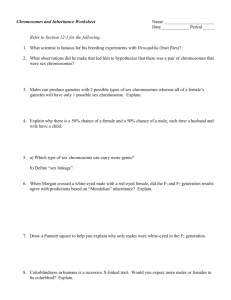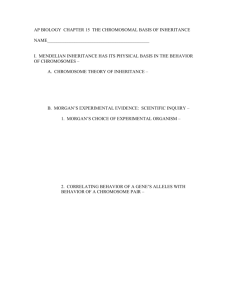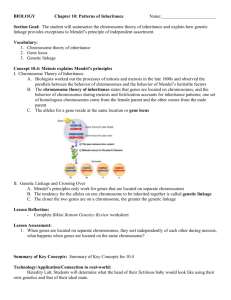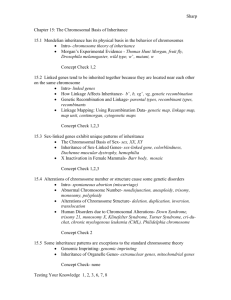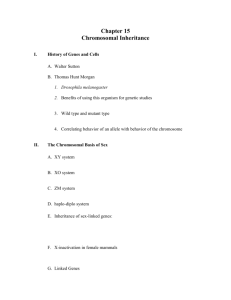Principles of Biology Lake Tahoe Community College
advertisement
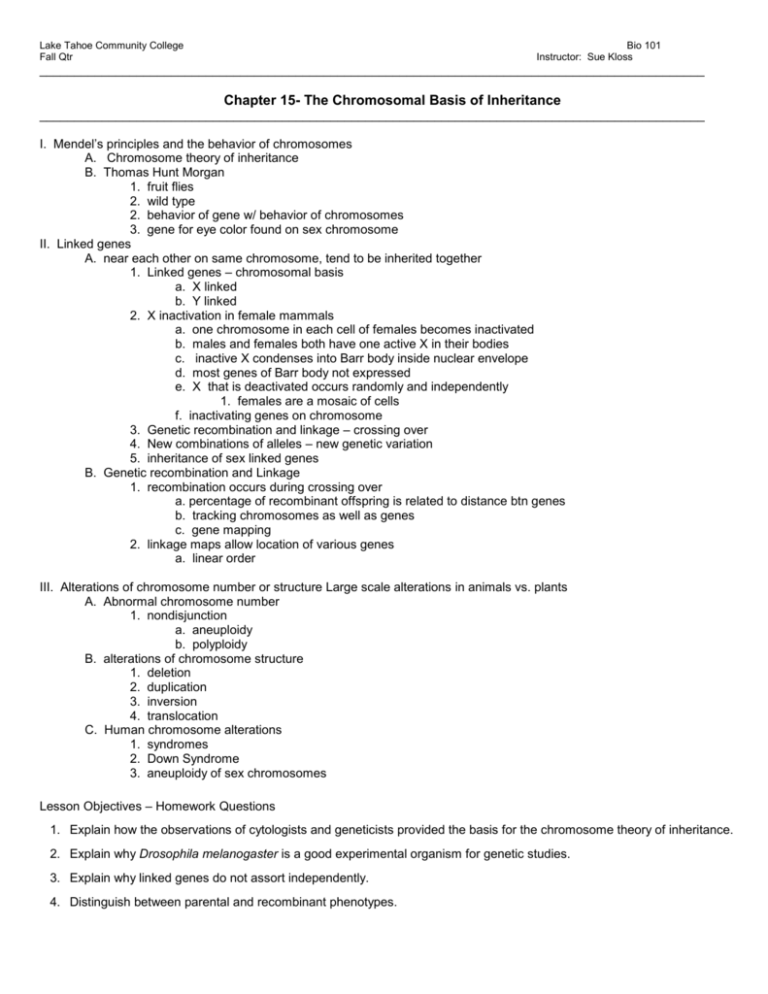
Lake Tahoe Community College Fall Qtr Bio 101 Instructor: Sue Kloss ________________________________________________________________________________________________ Chapter 15- The Chromosomal Basis of Inheritance ________________________________________________________________________________________________ I. Mendel’s principles and the behavior of chromosomes A. Chromosome theory of inheritance B. Thomas Hunt Morgan 1. fruit flies 2. wild type 2. behavior of gene w/ behavior of chromosomes 3. gene for eye color found on sex chromosome II. Linked genes A. near each other on same chromosome, tend to be inherited together 1. Linked genes – chromosomal basis a. X linked b. Y linked 2. X inactivation in female mammals a. one chromosome in each cell of females becomes inactivated b. males and females both have one active X in their bodies c. inactive X condenses into Barr body inside nuclear envelope d. most genes of Barr body not expressed e. X that is deactivated occurs randomly and independently 1. females are a mosaic of cells f. inactivating genes on chromosome 3. Genetic recombination and linkage – crossing over 4. New combinations of alleles – new genetic variation 5. inheritance of sex linked genes B. Genetic recombination and Linkage 1. recombination occurs during crossing over a. percentage of recombinant offspring is related to distance btn genes b. tracking chromosomes as well as genes c. gene mapping 2. linkage maps allow location of various genes a. linear order III. Alterations of chromosome number or structure Large scale alterations in animals vs. plants A. Abnormal chromosome number 1. nondisjunction a. aneuploidy b. polyploidy B. alterations of chromosome structure 1. deletion 2. duplication 3. inversion 4. translocation C. Human chromosome alterations 1. syndromes 2. Down Syndrome 3. aneuploidy of sex chromosomes Lesson Objectives – Homework Questions 1. Explain how the observations of cytologists and geneticists provided the basis for the chromosome theory of inheritance. 2. Explain why Drosophila melanogaster is a good experimental organism for genetic studies. 3. Explain why linked genes do not assort independently. 4. Distinguish between parental and recombinant phenotypes. 5. Explain how crossing over can unlink genes. 6. Explain how linkage maps are created; be able to create a linkage map. 7. Define a map unit. 8. Explain why Mendel did not find linkage between seed color and flower color, despite the fact that these genes are on the same chromosome. 9. Explain how genetic maps are constructed for genes located far apart on a chromosome. 10. Explain the effect of multiple crossovers between loci. 11. Explain what additional information cytogenetic maps provide. 12. Distinguish between linked genes and sex-linked genes, and effects of each of these. 13. Explain why sex-linked diseases are more common in human males. 14. Describe the process of X inactivation in female mammals. Explain how this phenomenon produces the tortoiseshell coloration in cats.




